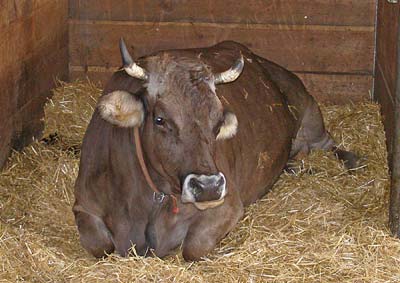An abbreviation for gravy browning, a commercial product made from caramel mixed with salt. It is used to colour gravies and soups. It also refers to the brown colour taken on by red wines as they age.
Moth bean. Sometimes called the brown lentil. A tiny pulse which, because it is small and dark, is often adulterated, so needs careful picking over.
Malt vinegar is made from unhopped beer, ie barley. It is naturally clear, in which case it is called light malt vinegar, but is commonly seen with added caramel, known as brown malt vinegar.

These cattle, primarily used for milk, are numerous in Switzerland, accounting for almost half the stock, and second only to Simmental. They are now widely found throughout western Europe, eastern block countries and Russia. They range in colour from a mousy brown to very dark brown.
Mustard seed with a hot, bitter flavour. They are a major ingredient of Colman's mustard. They can be used whole or ground.
Demi-glace sauce combined with onions sweated in butter and vinegar. Known in France as sauce lyonnaise.
French onion soup. A soup of browned onions and garlic cooked with brown stock and served with toasted French bread sprinkled with cheese, the whole thing browned under a grill until the cheese is seared and bubbling. A wonderful winter soup.
Very different from the East Asian oyster sauces, brown oyster sauce is béchamel sauce with brown stock, cayenne pepper, the juice from oysters. and poached oysters.
A seaweed similar to wakame but found in the North Atlantic. It has a mild flavour and is usually dried and then soaked before use in soups.
Brown rice usually refers to medium or long-grain whole, unpolished, unmilled rice, with only its tough outer husk removed, leaving the bran, a brown papery coating, in place on the rice grains. This gives the rice its characteristic light tan colour and nutty flavour. It is chewier and higher in fibre than white rice and needs twice as much cooking. It goes off quickly. This is because the germ, the brown coating of the rice grains, contains fats which can go rancid.